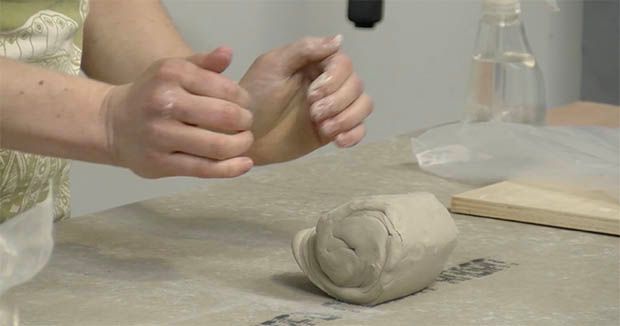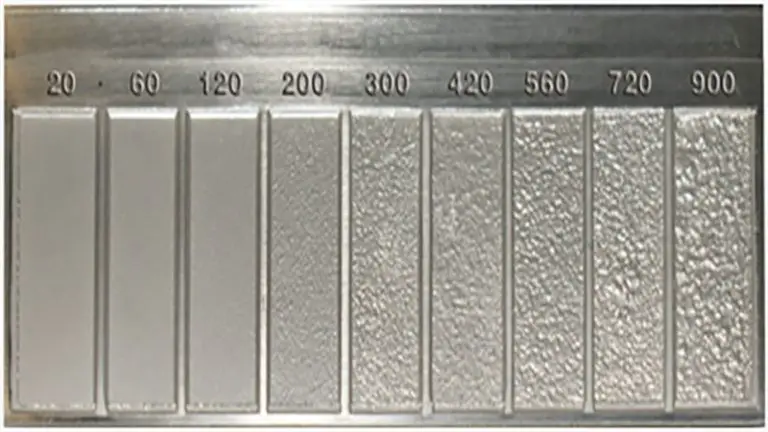Tips For Choosing The Right Clay As A Beginner
Choosing the right clay body is one of the most important decisions a beginner potter will make. The type of clay you use determines the characteristics of your finished pieces, including how durable they are, how they look, and what you can make with them. Using clay that is poorly suited to your skill level or project goals will only lead to frustration and disappointing results.
This article provides an overview of the main types of pottery clay, including porcelain, stoneware, and earthenware. It covers the key properties of each clay, such as plasticity, texture, firing temperature, and cost. Tips are provided on the best clay options for beginner projects like handbuilding and wheel throwing. Safety considerations for storing and prepping clay are also discussed. With the right guidance on choosing the appropriate clay, beginners can have a much smoother introduction to the wonderful world of pottery.
Porcelain vs Stoneware vs Earthenware
The three main types of clay bodies are porcelain, stoneware, and earthenware. They each have different properties that make them suitable for certain applications.
Porcelain is fired at very high temperatures, usually around 2,300°F. It is extremely hard and durable with a glass-like surface that is non-porous and resistant to stains. Porcelain has a very fine texture and is usually white or light colored after firing. It’s ideal for tableware, sculptures, and decorative pieces where strength and translucency are desired.[1]
Stoneware is fired at lower temperatures than porcelain, typically around 2,000°F. It results in a strong, opaque ceramic that is water-resistant and durable. Stoneware has a coarse, earthy texture and comes in a variety of natural clay colors. It’s commonly used for pottery, dishes, vases, and other household items that require good thermal resistance.[2]
Earthenware has the lowest firing temperature, usually below 2,000°F. It’s porous and brittle compared to stoneware and porcelain. Earthenware retains its natural clay color after firing and has an earthy, coarse texture. It’s used for flower pots, decorative pieces, tiles, and other items where high strength is not required.
Clay Bodies
Clay bodies are categorized based on the temperature at which they must be fired to vitrify or mature. The main clay body types are earthenware, stoneware, and porcelain, which vary in their firing ranges and typical uses.
Earthenware clays are low-fire clays that mature at lower temperatures, typically between 1500-2200°F. They have an earthy, porous look and feel. Common uses for earthenware clays include terra cotta pots, decorative tiles, and country pottery. Earthenware is beginner-friendly because it fires at lower temps and is less prone to cracking and glaze issues. Some examples of earthenware clays are redart clay and speckled buff clay.
Stoneware clays are mid-range fire clays, maturing between 2200-2400°F. They result in less porous, stronger pieces than earthenware. Stoneware has excellent workability. It is commonly used for functional tableware like mugs, plates, bowls as well as large pots. Some stoneware clays are solomon gare SP-3 and laguna speckle clay.
Porcelain clays are high-fire clays, fired up to temps between 2250-2500°F. Porcelain has extremely low porosity and can result in delicate, translucent pieces. However, it requires careful preparation and drying due to its high shrinkage rate. Porcelain is popular for sculptures, tableware, and decorative pieces. Some examples of porcelain clays are babu porcelain and lahg kaolin.
It’s important to match the type of clay to your kiln’s temperature capabilities. Check with clay manufacturers for the ideal firing range. For beginners, mid-range stoneware clays offer a good balance of workability, strength, and firing requirements.
Plasticity and Workability

The plasticity of a clay refers to how easily it can be shaped and molded without cracking or crumbling. Highly plastic clays, like porcelain, are very flexible and can be stretched thin without breaking. Less plastic clays, like stoneware, are stiffer and more difficult to manipulate into delicate shapes.
Workability describes how easily a clay can be wedged and formed. A clay’s workability is affected by its plasticity as well as factors like sand or grog content. Highly workable clays are buttery smooth and enjoyable to throw on the wheel. Less workable clays can begin to dry out and crack while throwing.
For beginners, a clay with moderate plasticity and high workability is ideal. These clays hold their shape while still being forgiving as you learn to center and throw. Recommended choices are stoneware and porcelain blends, which combine the strength of stoneware with the plasticity of porcelain. Avoid highly plastic clays as they can become floppy and difficult to control.
It’s also important to choose a clay rated for shrinkage of 10-12% to reduce cracking and breakage. Let your clay provider know you are a beginner and ask for a recommendation to suit your skill level. With experience, you can explore more specialized clay bodies with varying properties.
Sources: https://ceramicartsnetwork.org/daily/article/The-Particulars-of-Clay-Body-Plasticity, https://thepotterywheel.com/choosing-clay-for-a-beginner/
Color and Texture
The natural color of clay depends on its mineral composition. Most pure clay minerals have a light or white color. However, natural clays contain mineral impurities that provide a wide range of hues from red, brown, yellow, to even gray or black.
Different types of clay have characteristic textures. Porcelain clays tend to be extremely smooth and fine grained. Stoneware clays have more tooth and are moderately coarse. Earthenware clays are the most coarse with obvious granular texture. These textures affect the look and feel of finished pieces.
Clays can be altered to achieve different colors and textures. Adding stains, oxides, or pigments will change the color. Mixing in grog, sand, or organic matter creates more coarse and irregular textures. Firing temperature also affects coloration. High temperatures intensify colors while low temperatures preserve the raw clay color. For more techniques, see this tutorial on how to color air dry clay textures from the Clay Plant.
Choosing a clay with an appealing natural color and texture is important. However, keep in mind that the color and texture can be modified if needed for different projects.
Availability and Cost
When selecting clay as a beginner, it’s important to consider availability and cost. Prepared clays from reputable manufacturers are widely available at art supply stores and online retailers. According to this forum discussion, a 25 lb bag of moist clay can cost around $6. Meanwhile, dry clay may be slightly cheaper at around $1.10 per lb according to this source. However, dry clay requires proper storage and mixing.
While buying prepared clay is more convenient, mixing your own can allow you to customize the clay body properties and may be cheaper in bulk. According to Jeff Zamek, you must consider the time spent buying raw materials, storing and mixing the clay yourself. Overall, prepared clays offer convenience while mixing your own allows some customization and potential cost savings.
Projects for Beginners
When just starting out, it’s best to choose a clay that is forgiving and easy to work with for your projects. Here are some clays that are great for common beginner projects:
For handbuilding and sculpture, an earthenware clay like Earthborn Sculpture Clay is a good choice. Earthenware clays are flexible and smooth, making them ideal for sculpting intricate details.
For wheel throwing pots and vases, a stoneware clay like CCC Buff Stoneware provides good plasticity and workability. Stoneware clays hold their shape well when thrown on the wheel.
For jewelry like beads and pendants, a porcelain like Sheffield Pottery Porcelain fires to a smooth, glassy finish. Porcelain is extremely fine and perfect for delicate jewelry pieces.
For handbuilding functional pieces like mugs and bowls, a versatile earthenware like Laguna Speckled Clay works well. The speckles add natural character to finished pieces.
Focus on 1-2 projects to start and choose a clay formulated for that technique. Ask at local ceramic shops for their recommendations on beginner-friendly clays too.
Storage and Prep
Proper storage of clay is crucial for keeping it workable. Fresh clay should be stored in an airtight plastic bag or container to prevent it from drying out. According to Pottery Crafters, the best method is to store clay in both a sealed bag and a plastic container. This double protection prevents moisture loss. Stored properly, clay can remain usable for months.
Before using clay, it helps to prepare it by wedging or kneading. This process evenly distributes moisture and removes air pockets, resulting in a smooth, workable consistency. Beginners may want to start with smaller amounts of clay and re-wedge portions as needed while working on projects. Allowing clay to sit wrapped in plastic for a day after wedging helps achieve uniform moisture and flexibility.
Safety Tips
When working with clay, be aware of the potential health hazards and follow safety precautions. Dry clay dust can irritate eyes, skin, and the respiratory system if inhaled over time. Be sure to work in a well-ventilated area and wear an N95 respirator mask approved for fine particulates if the clay is dusty (Ceramics | Office of Environmental Health and Safety). When mixing dry clay, avoid stirring up dust by wetting the clay first. Clean up spilled clay right away using wet mopping methods.
Wet clay body and glaze materials can also pose hazards. Some clay and glaze ingredients contain heavy metals like lead, cadmium, or barium that should not be ingested. Wear gloves when handling wet clay and wash hands thoroughly before eating or drinking. Use separate towels and sponges designated just for clay work. Avoid scraping dry clay or glaze materials off tables or floors where dust can be stirred up – use wet cleaning methods instead. Allow all clay work to fully dry before sanding or firing to avoid exposure to toxic dusts (Safely Handling Clays and Glazes – Columbia | Research). With care and proper precautions, creating pottery with clay can be an enjoyable and safe experience.
Conclusion
Choosing the right clay as a beginner potter or ceramicist can seem daunting at first, but keeping a few key factors in mind will set you up for success.
First and foremost, consider the type of projects you want to make and choose a clay body accordingly. Earthenware is great for handbuilding and sculptural work, while porcelain excels at thin wares like cups or vases. Stoneware falls somewhere in between with its versatility and durability.
Pay attention to properties like plasticity, workability, color and texture too. A clay that’s easy to wedge and center on the wheel will be beginner-friendly. Neutral colored clay bodies are good starter options before exploring bolder hues.
Shop for availability and cost in your area. Ask for recommendations from experienced potters nearby and buy small test amounts to see which clay suits you best.
Start with simple, forgiving projects while practicing good storage, preparation and safety habits. Have fun experimenting with different clays as you continue to learn and grow as a ceramic artist!




